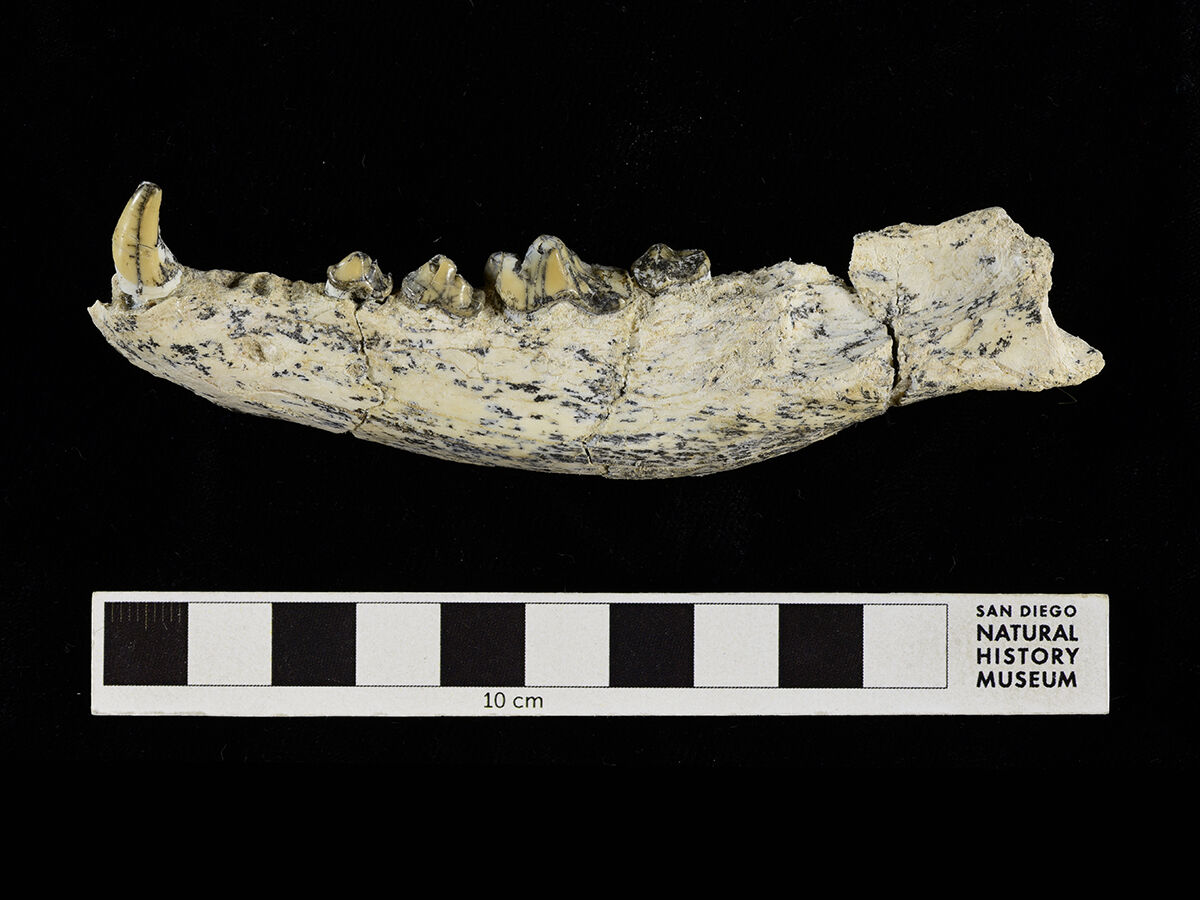Not all fossils are showy, but all fossils tell a story, says Thomas Deméré, curator of paleontology and director of paleo services at the San Diego Natural History Museum. So it goes with the one seen here, the lower jaw of an early canid, an ancestor of modern wolves and foxes. It’s just one of thousands recovered by The Nat’s paleontology team from the Caltrans Otay Mesa Port of Entry construction site in July. The department has worked with Caltrans for over 40 years, scoping project sites for potential discoveries to unearth and remove so they can be studied while the crew gets back to work.
The process is a methodical one. The team extracts the bones and fossil fragments by removing large blocks of sediment that they “jacket,” or encase in a mixture of burlap and plaster to transport back to the museum. Once there, the fossils are carefully removed from the sediment blocks to be prepped for analysis. The blocks themselves are also studied: 20,000 pounds worth of sediment that clue paleontologists in to the fossils’ original environment and climate—in this case, a riverbed. The fossils are stored in cabinets with a strong seal, which are in turn stored in a room that is temperature and humidity controlled to avoid degradation. They’ll stay behind closed doors until they’re fully examined and, potentially, ready for their close-up on the museum floor.
Deméré anticipates it’ll be spring before he and his team will have a solid understanding of everything they found in July, but the results are already exciting. These ancestors of modern mammals like camels, horses, rodents, and our canid pal are believed to be around 15–16 million years old, which fills a gap in our local geological record. With further examination, these fossils may lend some insight into the dynamic, and previously unknown, past of San Diego.

PARTNER CONTENT
Object of Interest / Fossils



















